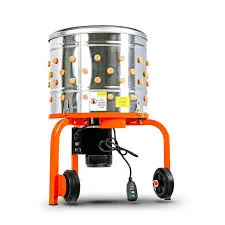Efficient Solutions for Livestock Feed Mixing Machinery
Dec . 16, 2024 11:12 Back to list
Efficient Solutions for Livestock Feed Mixing Machinery
The Importance of Feed Mixer Machines in Modern Agriculture
In the ever-evolving world of agriculture, efficiency and productivity stand as pillars for success. Farmers and livestock producers are continuously seeking ways to enhance the quality of feed and reduce operational costs. One of the essential tools that have revolutionized animal husbandry is the feed mixer machine. This article will delve into the various aspects of feed mixer machines, their importance, types, and benefits.
Understanding Feed Mixer Machines
Feed mixer machines are specialized equipment designed to blend and mix various feed ingredients uniformly to create a balanced diet for livestock. These machines play a crucial role in ensuring that the nutritional needs of animals are met, thereby promoting their growth and overall health. By providing a consistent mix, feed mixer machines help prevent selective feeding, where animals may consume only certain ingredients, leading to nutritional imbalances.
Types of Feed Mixer Machines
There are several types of feed mixer machines available in the market, each designed to cater to specific needs and operations
. The most common types include1. Vertical Feed Mixers These machines feature a vertically oriented mixing chamber. They are known for their ability to mix a variety of feed ingredients quickly and efficiently. Vertical mixers are particularly suitable for farms with limited space.
2. Horizontal Feed Mixers With a horizontal orientation, these mixers allow for larger quantities of feed to be mixed at once. They provide an even distribution of ingredients, making them ideal for larger operations that require high-volume production.
3. Batch Mixers Batch mixers operate on a recipe basis, where a specific quantity of various ingredients is mixed at one time. They are versatile and can be adjusted to accommodate different recipes based on the nutritional requirements of the livestock.
4. Continuous Mixers Designed for continuous operation, these machines work by feeding ingredients into the mixer on an ongoing basis. This type is suitable for operations that require a constant supply of mixed feed.
feed mixer machine

Benefits of Using Feed Mixer Machines
The incorporation of feed mixer machines in agricultural operations offers numerous benefits
1. Improved Nutritional Quality By ensuring a precise and balanced mix of feed ingredients, these machines enhance the nutritional quality of the feed, promoting better animal health and growth rates.
2. Time Efficiency Modern feed mixer machines significantly reduce the time required to prepare feed. Automated systems can mix large quantities of feed in a matter of minutes, allowing farmers to focus on other essential tasks.
3. Cost-Effectiveness By optimizing the feed formulation, farmers can reduce feed wastage and lower overall feed costs. This increased efficiency in the mixing process directly contributes to profit maximization.
4. Reduced Labor Costs Automation and advanced technology in feed mixer machines lessen the need for manual labor, reducing labor costs and minimizing human error in feed preparation.
5. Versatility These machines can handle a wide range of feed types, including grains, vitamins, supplements, and minerals, making them suitable for various livestock species and production systems.
6. Consistency A uniform mix ensures that every animal receives the same quality of feed, which is crucial for maintaining herd health and improving overall productivity.
Conclusion
The feed mixer machine has become an indispensable tool in modern agriculture, greatly enhancing the efficiency and effectiveness of livestock feeding operations. As the demand for high-quality animal products continues to rise, the importance of maintaining optimal nutrition for livestock cannot be overstated. By leveraging the capabilities of feed mixer machines, farmers can ensure that their animals receive balanced diets, ultimately leading to healthier livestock and increased productivity. With technology advancing rapidly, the future of feed mixing looks promising, offering even more innovative solutions to meet the evolving needs of the agricultural sector.
-
Hot Sale 24 & 18 Door Rabbit Cages - Premium Breeding Solutions
NewsJul.25,2025
-
Automatic Feeding Line System Pan Feeder Nipple Drinker - Anping County Yize Metal Products Co., Ltd.
NewsJul.21,2025
-
Automatic Feeding Line System Pan Feeder Nipple Drinker - Anping County Yize Metal Products Co., Ltd.
NewsJul.21,2025
-
Automatic Feeding Line System - Anping Yize | Precision & Nipple
NewsJul.21,2025
-
Automatic Feeding Line System - Anping Yize | Precision & Nipple
NewsJul.21,2025
-
Automatic Feeding Line System-Anping County Yize Metal Products Co., Ltd.|Efficient Feed Distribution&Customized Animal Farming Solutions
NewsJul.21,2025






